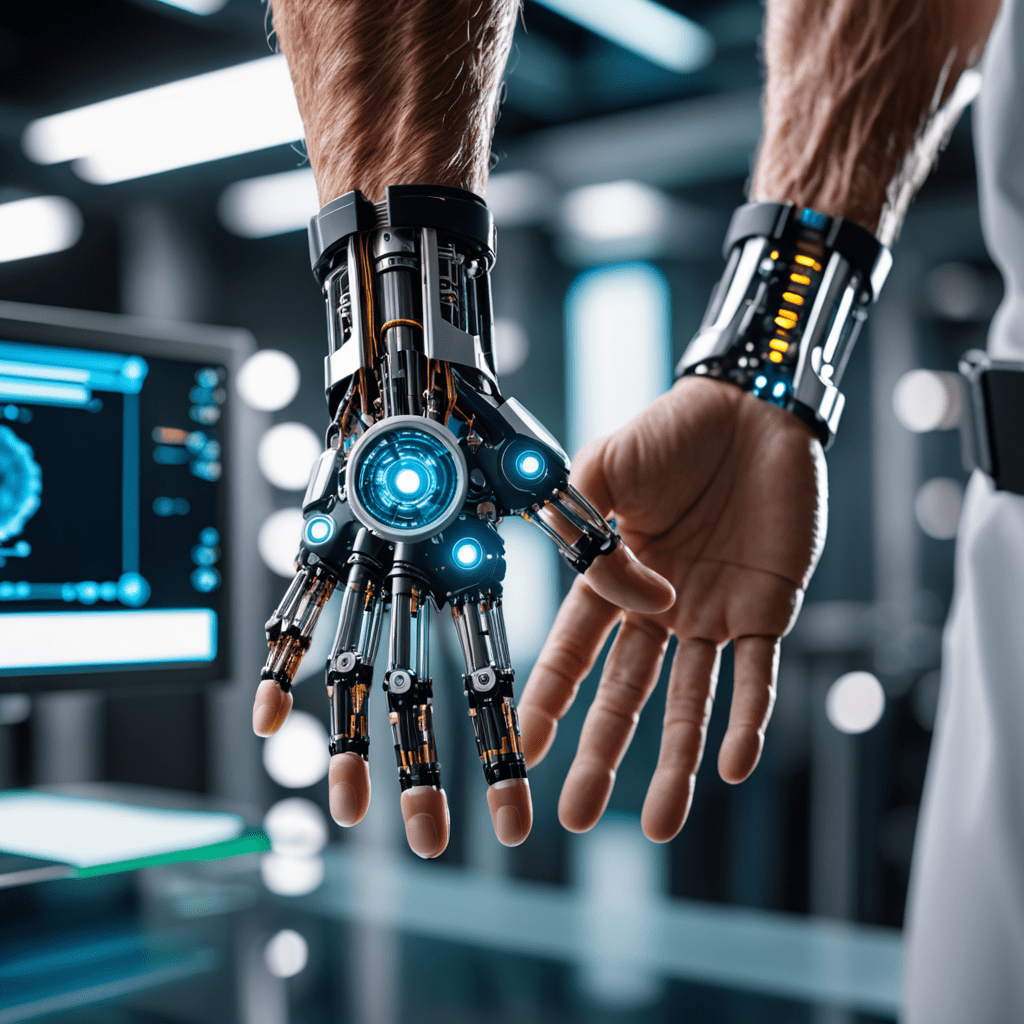Nanotechnology in Neuroprosthetics: Enhancing Prosthetics with Nanotech
Introduction
In recent years, the field of neuroprosthetics has seen significant advancements, thanks to the integration of nanotechnology. This article delves into how nanotech is revolutionizing the design and functionality of prosthetic devices, offering new hope and possibilities to individuals with limb loss or neurological disorders.
Understanding Neuroprosthetics
Neuroprosthetics involves the use of artificial devices to replace or enhance the function of the nervous system. These devices can range from simple limb prosthetics to more complex brain implants that help restore lost sensory or motor functions.
The Role of Nanotechnology
Nanotechnology plays a crucial role in enhancing neuroprosthetics by enabling the development of smaller, more precise, and biocompatible devices. Nanomaterials such as carbon nanotubes and nanowires are being used to improve the conductivity and durability of prosthetic electrodes.
Benefits of Nanotech in Neuroprosthetics
The integration of nanotechnology in neuroprosthetic devices offers several advantages. It allows for better interfacing with the nervous system, increased longevity of devices, and reduced risk of tissue damage or rejection.
Challenges and Future Directions
Despite the promising advancements, challenges remain in the widespread adoption of nanotechnology in neuroprosthetics. Issues such as long-term biocompatibility, scalability, and affordability need to be addressed to make these technologies more accessible to individuals in need.
Examples of Nanotech Neuroprosthetics
Several groundbreaking nanotech neuroprosthetic devices are currently in development or already in use. Examples include bionic limbs with enhanced sensory feedback, brain-machine interfaces for controlling external devices, and retinal implants for restoring vision in the visually impaired.
Conclusion
In conclusion, the marriage of nanotechnology and neuroprosthetics holds immense promise for improving the quality of life for individuals with disabilities. As researchers continue to explore new materials and design strategies, we can expect to see even more innovative and effective neuroprosthetic solutions in the near future.
FAQ: Nanotechnology in Neuroprosthetics
What is Nanotechnology in Neuroprosthetics?
Nanotechnology in neuroprosthetics refers to the use of nanoscale materials and devices to enhance prosthetics that interface with the nervous system. This technology allows for more precise and efficient control of prosthetic devices.
How does Nanotech Enhance Prosthetics in Neuroprosthetics?
Nanotechnology improves prosthetic devices by enabling more seamless integration with neural tissue. Nanoscale sensors and actuators can enhance sensitivity and responsiveness, allowing for more natural movements and feedback.
What are the Benefits of Nanotechnology in Neuroprosthetics?
The benefits include enhanced functionality, improved durability, and better biocompatibility. Nanotech-enabled prosthetics offer greater control, reduced discomfort, and a more natural feel for users.



